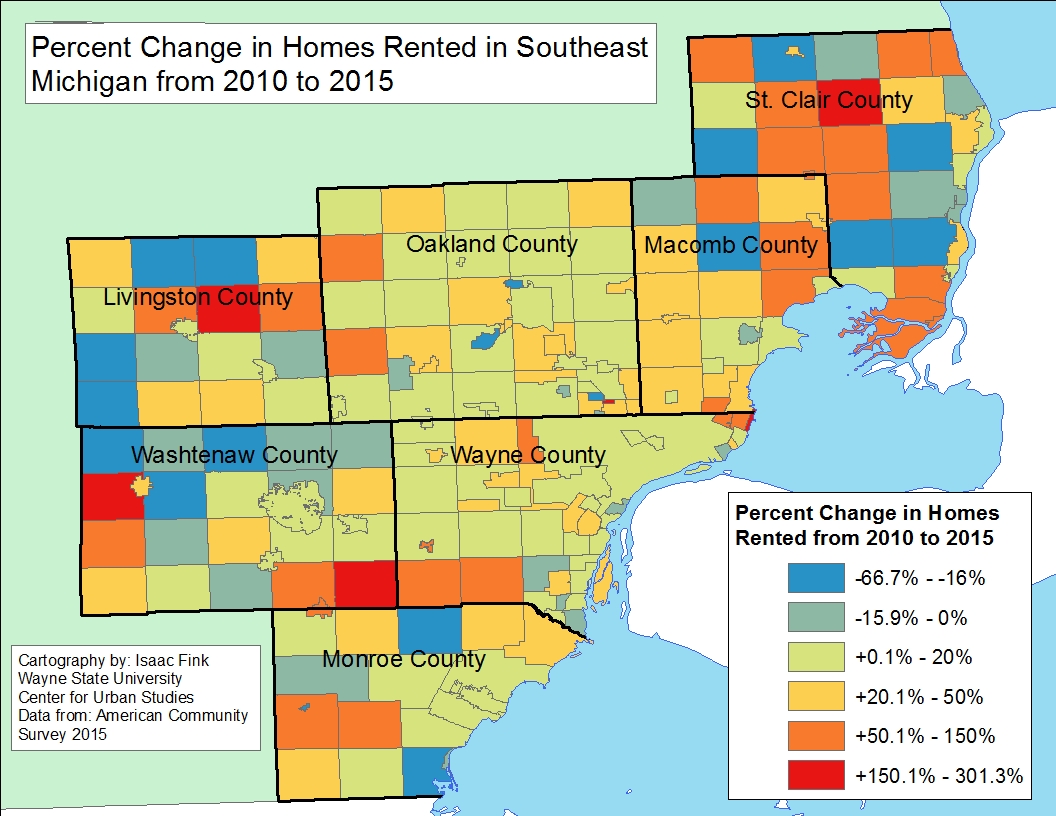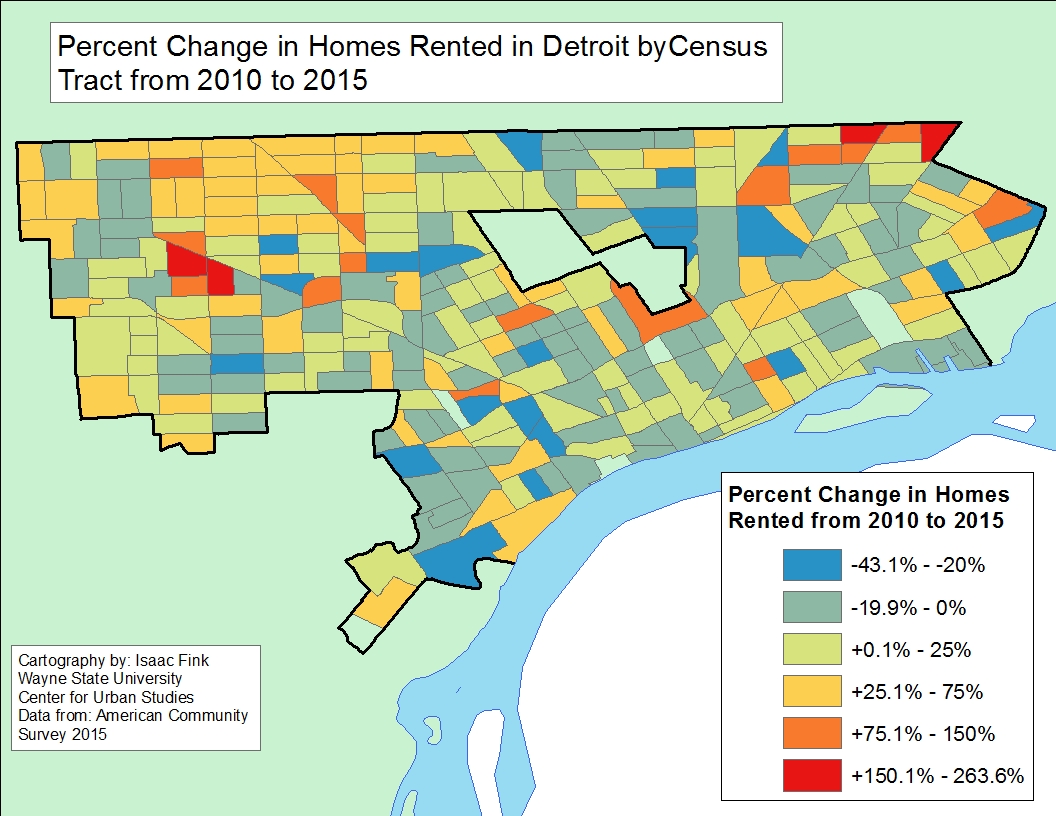There were nine municipalities in Southeastern Michigan that experienced more than a 100 percent increase in occupied rental units between 2010 and 2015, according to the American Community Survey. Sylvan Township in Washtenaw County had the largest increase at 301 percent. In 2010 the township had 2.32 percent of its housing stock serving as filled rental units and by 2015 that increased to 9.3 percent, or a total of 109 rental units. Overall in Sylvan Township in 2015 there were 1,169 occupied housing units. All the municipalities with such high rental rate increases were among the smaller communities in the region.
Detroit, the largest city in the region, had an 11 percent increase in rental units. In 2010, 46 percent of the city’s occupied housing stock was rental units and in 2015 that number increased to 51 percent, or about 124,000 units. There were only four Census tracts in Detroit (two in the north east corner and two on the west side) where the percentage of rental units increased by more than 150 percent. The northwest area of the city had about 25 Census tracts that experienced an increase between a 25 and 75 percent in occupied rental units. On the opposite side of the spectrum, there were 178 Census tracts in Detroit where the percentage of occupied rental units decreased by up to 60 percent. The data we are looking at in this post is related to occupied housing units, meaning increases and decreases can be directly correlated with the number of occupied rental units and overall occupied housing units. Overall, in 2010 in Detroit there were about 272,000 occupied housing units, of which about 124,000 were rentals. In 2015 the total number of occupied housing units decreased to about 256,000 while the number of rental units increased to about 129,000.
In a recent post we discussed how Highland Park had the highest percentage of occupied rental units in the region at 64 percent. Between 2010 and 2015 there was an overall 6 percent increase. In 2010 there were about 5,000 occupied housing units of which about 3,050 were occupied rental units. In 2015 there were about 4,500 occupied housing units, of which 2,880 were occupied rental units.
Other areas to note that have experienced increases in the percentage of rental units are the inner-ring suburbs that border Detroit. For example, Redford experienced an 87 percent increase in occupied rental units between 2010 and 2015, Eastpointe experienced a 61 percent increase, Ferndale experienced a 46 percent increase, Warren and Hazel Park each experienced a 26 percent increases.
There were 42 municipalities that experienced a decrease in the percentage of rental units occupied between 2010 and 2015 in the region. Similar to the municipalities with among the highest percentage of occupied rental unit increases, those with the decreases also had smaller populations and housing stocks. For example, the city of Huntington Woods in Oakland County experienced a 35 percent decrease in the occupied rental units. However, in 2015 there were about 2,500 total occupied housing units, 77 of which were occupied rental units.
While we do know that the total number of rental units has increased over the years as a reflection of the economy and the housing crisis, this post also brings to light how a community’s overall housing stock must also be considered.

